Hadrian’s Wall crosses England at its narrowest east-west point from the North Sea to the Irish Sea. It is a microcosm of England. It contains two great regional cities – Newcastle / Gateshead in the east and Carlisle in the west. The Newcastle-Gateshead quayside is a focus of cultural activities and art with the Sage Gateshead and the Baltic Art Gallery. With its abundance of good pubs, restaurants and magnificent Georgian architecture it is well worth a visit. To the east is the thriving Port of Tyne. Carlisle is a smaller but influential city supporting a rural area. Its centre is attractive and with a fascinating history is a delight to visit. Both cities are on the course of Hadrian’s Wall and are included in the Hadrian’s Wall National Trail.
Read More
The two coastlines are poles apart in character. The River Tyne enters the North Sea at the towns of Tynemouth and South Shields and has much shipping in and out of the Port of Tyne. The immediate coast line is rocky with cliffs and sandy bays. To the west the Solway Firth is a large expanse of marshes and mud flats – it has its own wild beauty and is transformed by the rise and fall of the tides. It is principally an area of small hamlets and villages.
The journey along the course of the Wall from Newcastle and Carlisle is farmland. Leaving Newcastle, Hadrian’s Wall diverges from the rural River Tyne and begins a gentle climb through attractive farmland. To the south the views are of towering skies, hills and eventually the moors of the North Pennines. The first high point is at Milecastle 24 from which there is a steep decline into North Tynedale.
From the River North Tyne at Chollerford Hadrian’s Wall passes the Roman fort of Chesters and rises to Limestone Corner where, to the north, is a panoramic view of the lower section of North Tynedale.
After a level stretch of the Roman Wall, including the Mithraic Temple at Brocolitia, the course of the Wall meets the first of the crags of the Whinsill Fault at Sewingshields. This geological phenomenon creates the north facing crags (cliffs) that define Hadrian’s Wall to many. In this higher section just livestock is farmed typical of the uplands. This terrain continues with its twists, turns and undulations to Walltown Crags where the Wall drops to the lower and flatter landscape of Cumbria.
The Northern Counties of England and the Scottish Borders have a very long history of violence. Much was because of the power struggles of the different kings and their aspirations of greater power, but, there were three hundred years of carnage and mayhem of family against family, bands of Rievers and private armies. This resulted in a plethora of fortified buildings from castles and forts to fortified manor houses and farm houses, bastles and pele towers.
Read Less
-

SEGEDUNUM BATH HOUSE – eHW0011
Hadrian's Wall, Hadrian's Wall - Eastern SectionThe Roman Fort of Segedunum is at the extreme eastern end of Hadrian's Wall in the Tyne Estuary. This is a picture taken in a reconstruction of the Bathhouse. To understand the Roman concept of bathing I thoroughly recommend a visit.£45.00–£475.00 -
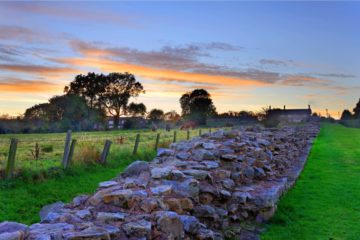
HEDDON ON THE WALL – HADRIAN’S WALL – eHW0505
Hadrian's Wall, Hadrian's Wall - Eastern SectionLeaving Newcastle Upon Tyne the first stretch of Hadrian's Wall in Northumberland is at the appropriately named Heddon On The Wall. From here to Carlisle the Hadrian's Wall Trail is entirely rural.£45.00–£475.00 -
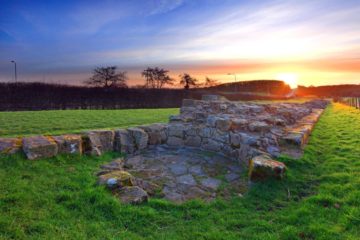
HADRIAN’S WALL – HEDDON ON THE WALL – eHW0511C
Hadrian's Wall, Hadrian's Wall - Eastern SectionHadrian's Wall at Heddon On The Wall is the first section of the Roman Wall on the eastward journey along the Hadrian's Wall Path in Northumberland.£45.00–£475.00 -
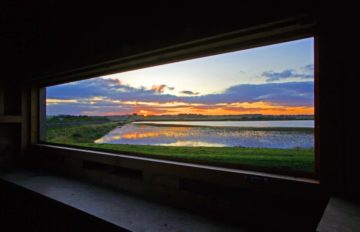
WHITTLE DENE – HADRIAN’S WALL- eHW0712
Hadrian's Wall, Hadrian's Wall - Eastern SectionFrom Heddon on the Wall the Hadrian's Wall Trail climbs gently eastwards through mixed farmland. It passes the Whittle Dene reservoirs where there is a bird hide. When I went there last the sightings book showed amazing visitors such as an albatross and dodo!£45.00–£475.00 -
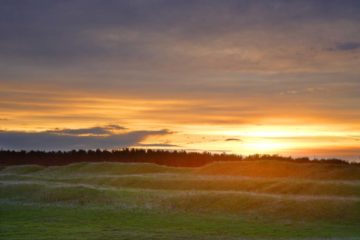
DOWN HILL – HADRIAN’S WALL – eHW0851
Hadrian's Wall, Hadrian's Wall - Eastern SectionThere is little of Hadrian's Wall in this first part of the Hadrian's Wall Path but the North Ditch and the Vallum remain in many places. This early morning winter picture shows the Vallum at Down Hill.£45.00–£475.00 -
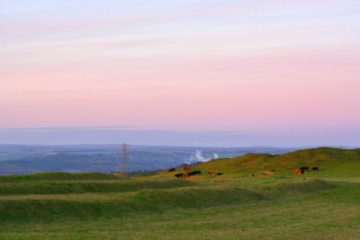
DOWN HILL – HADRIAN’S WALL – eHW0851A
Hadrian's Wall, Hadrian's Wall - Eastern SectionThere is little of Hadrian's Wall in this first part of the Hadrian's Wall Path but the North Ditch and the Vallum remain in many places. Tynedale and the North Pennines are the backdrop.£45.00–£475.00 -
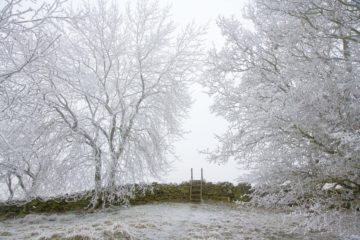
MILECASTLE 24 – HADRIAN’S WALL – eHW0904
Hadrian's Wall, Hadrian's Wall - Eastern SectionClose to Milecastle 24 on Hadrian's Wall in Northumberland on a misty, frosty afternoon. This is the highest point on the Eastern section of the Roman Wall.£45.00–£475.00 -
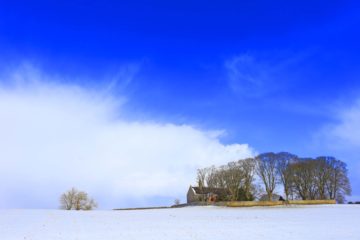
ST OSWALD’S CHURCH – HEAVENFIELD – HADRIAN’S WALL – eHW0908A
Hadrian's Wall, Hadrian's Wall - Eastern SectionSt Oswald's Church on the Hadrian's Wall Path in Northumberland is near the site of a defining battle in 684AD between the early Christians and Pagans. This picture was taken in March on a day of short blizzards and long sunny periods.£45.00–£475.00 -
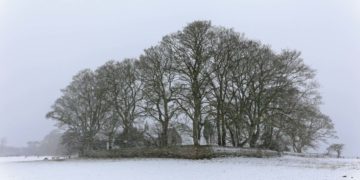
ST OSWALD’S CHURCH – HEAVENFIELD – HADRIAN’S WALL – EHW0908C
Hadrian's Wall, Hadrian's Wall - Eastern SectionSt Oswald's Church on the Hadrian's Wall Path at Heavenfield in Northumberland on a stormy early April day of strong winds and horizontal wet snow.£45.00–£475.00 -
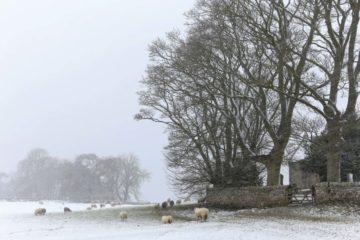
ST OSWALD’S CHURCH – HEAVENFIELD – HADRIAN’S WALL – EHW0908D
Hadrian's Wall, Hadrian's Wall - Eastern SectionSt Oswald's Church on the Hadrian's Wall Path at Heavenfield in Northumberland on a stormy early April day of strong winds and horizontal wet snow. The sheep carry on eating oblivious of the storm.£45.00–£475.00 -
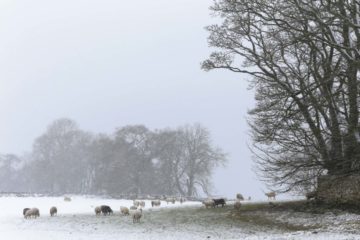
ST OSWALD’S CHURCH – HEAVENFIELD – HADRIAN’S WALL – EHW0908F
Hadrian's Wall, Hadrian's Wall - Eastern SectionSt Oswald's Church on the Hadrian's Wall Path at Heavenfield in Northumberland on a stormy early April day of strong winds and horizontal wet snow. The sheep carry on eating oblivious of the storm.£45.00–£475.00 -
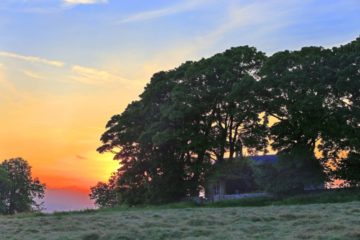
ST OSWALD’S CHURCH – HEAVENFIELD – HADRIAN’S WALL – eHW0910A
Hadrian's Wall, Hadrian's Wall - Eastern SectionSt Oswald's Church at Heavenfield on the Hadrian's Wall Path in Northumberland is an ideal place to rest weary feet. The Church is delightful with magnificent views to the north.£45.00–£475.00 -

ST OSWALD’S CHURCH – HEAVENFIELD – NORTHUMBERLAND – eHW0911.14
Hadrian's Wall, Hadrian's Wall - Eastern SectionAn extraordinary late autumn sunset at St Oswald's Church at Heavenfield in Northumberland on the Hadrian's Wall Trail. This was one stage of a spectacular display constantly morphing into other equally spectacular displays.£45.00–£250.00 -

St OSWALD’S CHURCH – HEAVENFIELD – NORTHUMBERLAND – eHW0911.20
Hadrian's Wall, Hadrian's Wall - Eastern SectionAn extraordinary late autumn sunset at St Oswald's Church at Heavenfield in Northumberland on the Hadrian's Wall Trail. This was one stage of a spectacular display constantly morphing into other equally spectacular displays.£45.00–£250.00 -

ST OSWALD’S CHURCH – HEAVENFIELD – NORTHUMBERLAND – EHW0912D
Hadrian's Wall, Hadrian's Wall - Eastern SectionIn late winter St Oswald's Church on the Hadrian's Wall Path in Northumberland is a joy to visit with its profusion of snowdrops, on this occasion amongst the remnants of light overnight snow.£45.00–£475.00 -
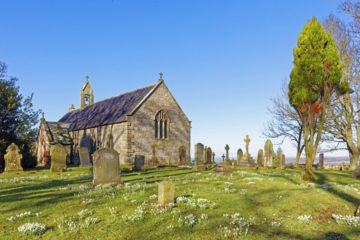
ST OSWALD’S CHURCH – HEAVENFIELD – NORTHUMBERLAND – EHW0912F
Hadrian's Wall, Hadrian's Wall - Eastern SectionOn a beautiful day in late winter St Oswald's Church on the Hadrian's Wall Path in Northumberland is a .joy to visit with its profusion of snowdrops.£45.00–£475.00 -
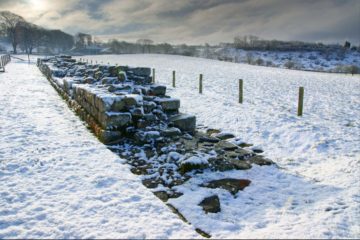
PLANE TREES HADRIAN’S WALL – eHW0927
Hadrian's Wall, Hadrian's Wall - Eastern SectionPlanetrees on Hadrian's Wall in Northumberland on a windy late winter morning.£45.00–£475.00 -
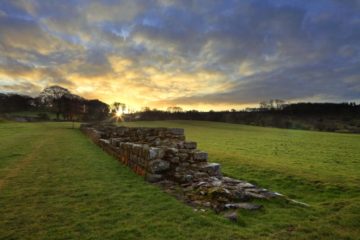
PLANETREES – HADRIAN’S WALL – eHW0933C
Hadrian's Wall, Hadrian's Wall - Eastern SectionPlanetrees on Hadrian's Wall in Northumberland is at the top of the descent to the River North Tyne.£45.00–£475.00 -

PLANETREES – HADRIAN’S WALL – eHW0933D
Hadrian's Wall, Hadrian's Wall - Eastern SectionPlanetrees on Hadrian's Wall in Northumberland is at the top of the descent to the River North Tyne.£45.00–£475.00 -
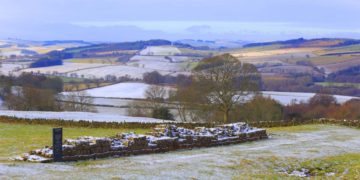
PLANE TREES – HADRIAN’S WALL – eHW0934
Hadrian's Wall, Hadrian's Wall - Eastern SectionPlane Trees is a short stretch of Hadrian's Wall in Northumberland with splendid views over North Tynedale. This picture was taken in late March after a light snow shower.£45.00–£475.00 -
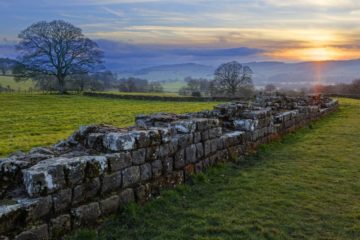
PLANETREES – HADRIAN’S WALL – eHW0935A
Hadrian's Wall, Hadrian's Wall - Eastern SectionFrom Planetrees on Hadrian's Wall in Northumberland there is a magnificent view over North Tynedale. There is a splendid view down over North Tynedale.£45.00–£250.00 -

PLANETREES – HADRIAN’S WALL – eHW0935B
Hadrian's Wall, Hadrian's Wall - Eastern SectionFrom Planetrees on Hadrian's Wall in Northumberland there is a magnificent view over North Tynedale. There is a splendid view down over North Tynedale.£45.00–£250.00 -
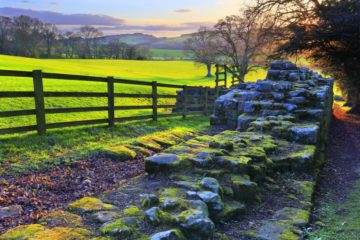
BRUNTON TURRET – HADRIAN’S WALL – eHW0951
Hadrian's Wall, Hadrian's Wall - Eastern SectionThe Brunton Turret on Hadrian's Wall in Northumberland is close to the River North Tyne. It is at the top of a field normally inhabited by sheep. It is worth the time to visit it.£45.00–£475.00 -
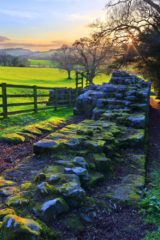
BRUNTON TURRET – HADRIAN’S WALL – eHW0952
Hadrian's Wall, Hadrian's Wall - Eastern SectionThe Brunton Turret on Hadrian's Wall in Northumberland is close to the River North Tyne. It is at the top of a field normally inhabited by sheep. It is worth the time to visit it.£45.00–£475.00

